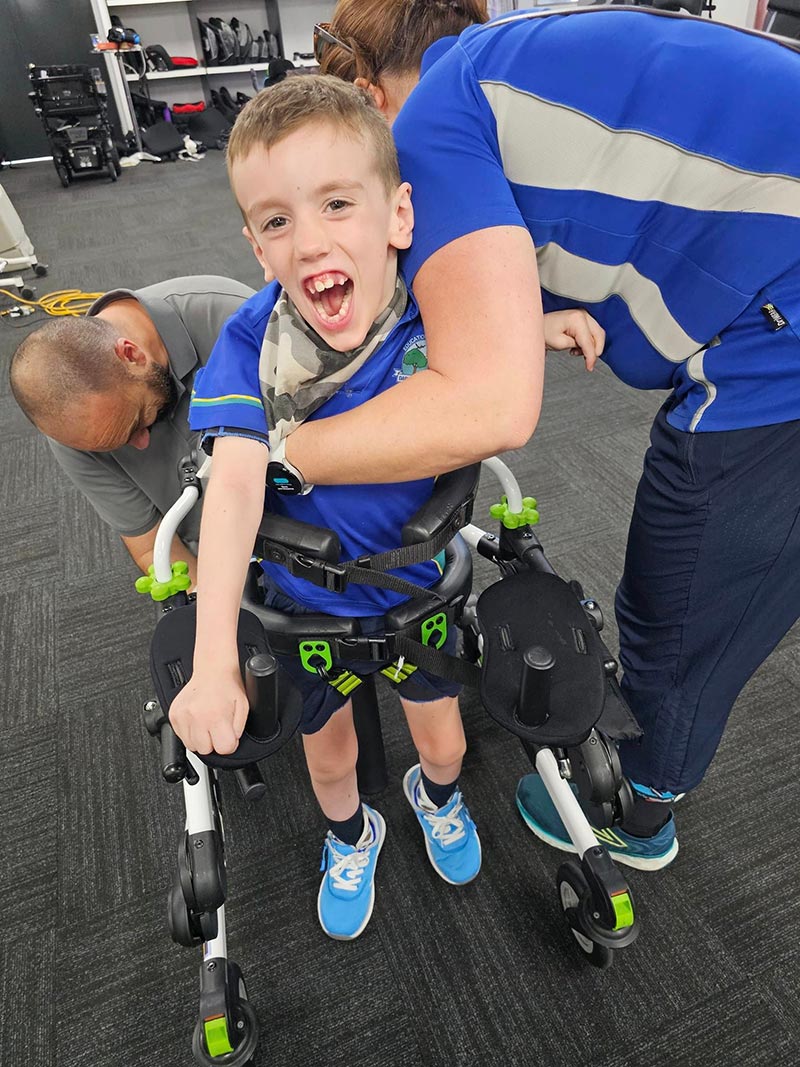Gait Training
Gait analysis is the assessment of a child’s walking and/or running pattern.
Gait Training
Gait analysis is the assessment of a child’s walking and/or running pattern.
Gait Analysis
Gait analysis is the assessment of a child’s walking and/or running pattern. Poor gait is inefficient, but can also cause compensatory patterns which may result in damage in other areas.
Our Exercise Physiologists are trained to identify any gait abnormalities and determine muscle imbalances, provide corrective exercises, and provide information as to which muscles to stretch and which muscles to strengthen.
Gait analysis can be done in various ways.
- An experienced Exercise Physiologist can detect gait abnormalities purely via observing your walking or running style.
- Video gait analysis can be used to slow down your walking action for both assessment and correction purposes.
- Force plate analysis can also be used.
Gait Abnormalities
Gait abnormalities might be obvious when children first start walking, particularly if the disorders are severe, and some of these can be natural, but most gait abnormalities in children improve by themselves with time.
Some children develop gait abnormalities at a later age, and sometimes they get worse over time. These are a few common gait abnormalities we see in children:
- Pigeon toe or in-toeing
- Out-toeing
- Toe walking
Whilst these things can be obvious we might notice things like:
- In the stance phase, your child might drop their hip.
- They might have difficulty clearing the ground when stepping causing them to swing the leg round instead of through.
- They may not be able to support the weight fully enough to step with the other leg.
- They may be unable to pull up their toes and appear to “drag” their foot.
- They may lean too far forward causing them to trip frequently especially when walking quickly or running.
- They may push their walking aide too far forward for an inefficient gait.
- Poor balance
- Inefficient step pattern
Retraining
Treatment for gait abnormalities depends on the cause and severity, as well as your child’s age.
Most gait deviations are mild and don’t need treatment. They’ll sort themselves out as your child grows. In these cases, we will keep checking your child’s development to make sure the problem is going away.
In other cases, your Exercise Physiologists can develop treatment strategies specific to your child to improve their function:
- Gentle strengthening exercises
- Referral for orthotics to wear in their shoes
- Stretches to help lengthen the leg muscles
- Some children with more severe and persistent gait disorders might need an orthopaedic referral

